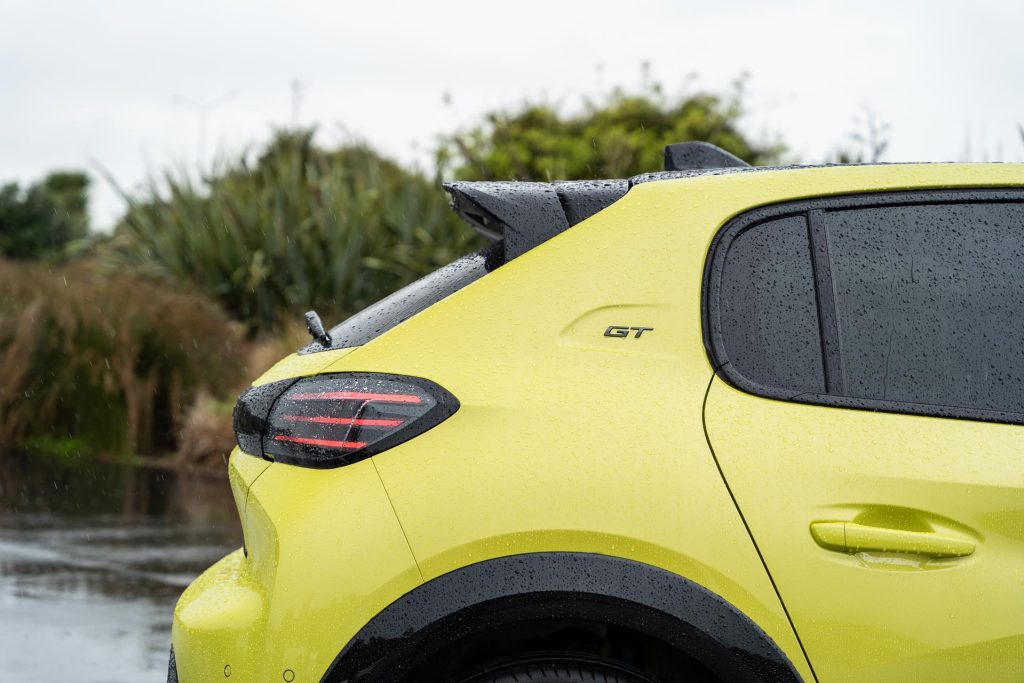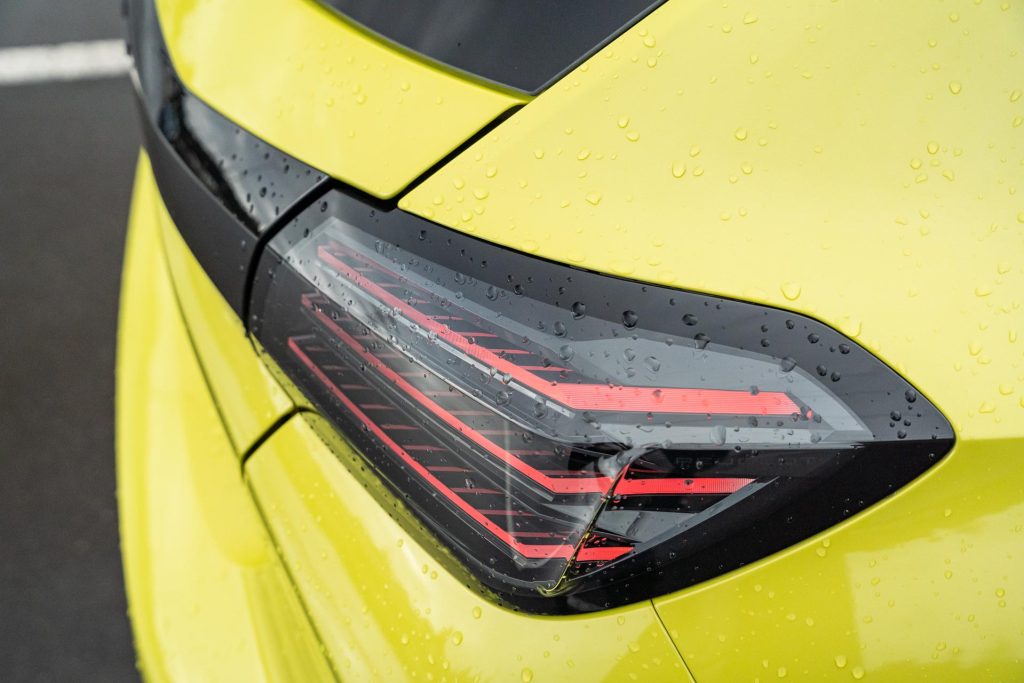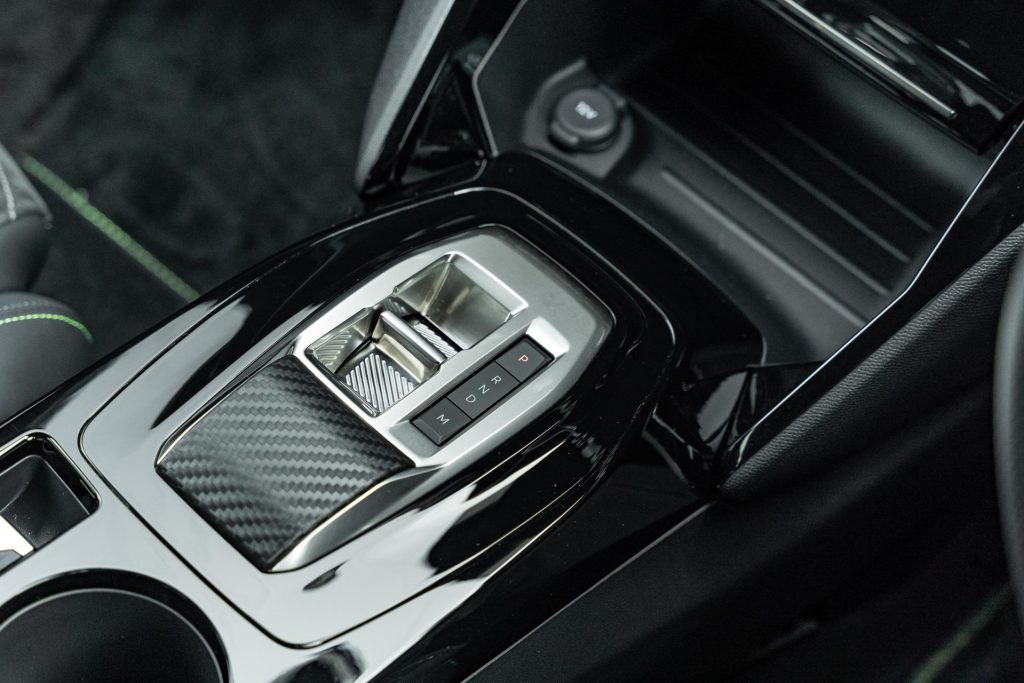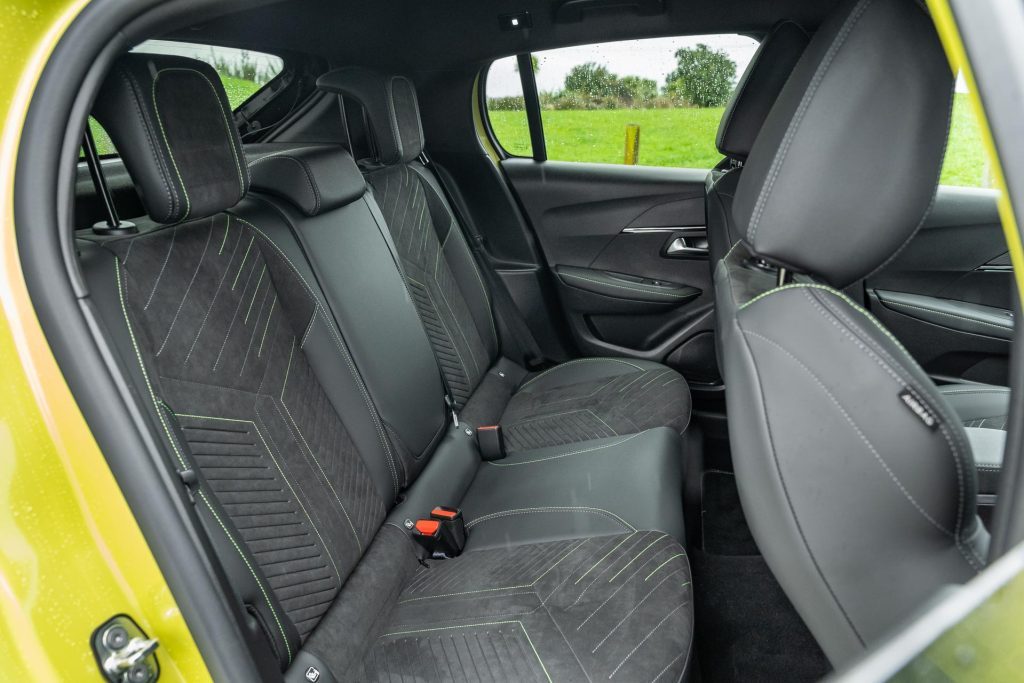2024 Peugeot 208 GT Hybrid review
Words: Kyle Cassidy | Photos: Isaac Western
Peugeot has ushered in a new era of electrification with the revised 208 GT, its first mild hybrid offering. Is it a sparkler?
Like many car makers, Peugeot has made a commitment towards a more ‘sustainable’ future.
But unlike others that signalled an intent to go all-in on EVs (and recently backtracked on those decisions), Peugeot has ticked the box but hasn’t over committed.

Yes, it has a range of battery-powered models but its electrification goal is a little less ambitious, and therefore more achievable. It’ll electrify all Peugeot models, both passenger cars and commercial vehicles, by 2025.
It’s all in the wording; electrifying means they can add volts in a mild manner. Case in point is the facelifted version of the previous 208 GT – it wears the hybrid badge on its rear thanks to its new electrified powertrain.
Hybrid of the 48v breed
This 208 has a revised turbocharged three-pot, good for 100kW and 230Nm of torque, the latter made at 1750rpm.

The hybrid bit is the e-DCS6 dual-clutch gearbox that includes an electric motor running on a 48v system.
Peugeot says this offers extra torque at low revs and up to 15 per cent lower fuel consumption. That number for the facelifted GT is 4.7L/100km where the old one was 6.3.
This is one of those self-charging hybrids, so no plug-ins are required. While most of these 48v mild hybrids don’t offer any 100 per cent zero-emissions running, this one does.
It’s reserved primarily for low-speed stuff, ambling about the car park, or in heavy traffic. But it can also handle engine-off, steady-state cruising, the triple nodding off depending on the need.

The interplay between the power units is well managed; it’s not too jerky when they combine. The dual-clutch has a decent take up away from stopped (not too slurry in other words) and the gear changes are quick yet smooth, both up and down the ratios.
The GT has a decent turn of pace when required too but usually you just mooch about on the low-end torque.
There’s a degree of motor regen when you’re off the throttle, though the brakes are needed to pull you up completely.

These at first seem rather sensitive but you warm to their operation and they’re not too snatchy at slow speeds.
So is it economical?
Your fuel economy will depend largely on where you drive (and how leaden your foot is). Best economy will be enjoyed by those who are often grinding along slowly in city traffic, which is where the electric motor works most often.
Here you’ll get consumption in the fours. On the motorway, expect mid-fives, while stop-start urban driving in 50-60km/h zones is more likely to be six and above. Our average was 6.4L/100km.
It’s a good urban operator with a tight turn around and easy steering. Being a Peugeot, the ride is well sorted.

Through the curves, the steering could do with a little more life to help improve your accuracy and keep things smooth, while a little less self-centering action would also help.
Otherwise, the GT is a lively enough character, the front end faithful, the rear stable. And should you go a bit hard, the stability control will help out in a non-invasive manner.
It rides the bumps well for a small car too, and highway road noise isn’t too bad for the class.
The motor regen that is apparent at urban speeds isn’t so at highway velocities so thankfully the brake pedal action is okay, and not as sensitive as it is in the car park.

Fresh looks too
The 208’s front end is new and distinctive. The grille is bold, the brand’s new logo at its centre, and features a body-coloured pattern that blends into the bumper.
Where there were two light claws there are now six, with three long vertical DRLs on each side under the LED headlights, also with a new trio of light signatures.
And round the back, the taillights each have the triple claw effect, arranged horizontally.

Hope you like the Agueda Yellow colour. It’s the only free choice; all other hues are between $550 and $950 extra.
The wheels are pretty out there, the ‘disruptive designs’ apparently a key element of Peugeot’s new styling.
The spec is high
Peugeot’s i-Cockpit layout gives the 208 a unique driving position. The instrument cluster is positioned above the compact steering wheel (or the instrument of driving pleasure as they call it) which they say puts the 10-inch digital cluster ‘at the driver’s eye level’.

Taller drivers might not find it ideal with some finetuning needed to get the wheel in the right position. Electric adjustment on the seat helps there.
Once sorted, you can dial in your preferred layout for the driver’s display, though don’t expect anything as quaint as a tacho. A power gauge lets you know if you’re driving economically while another keeps tabs on the flow of energy.
The cabin design is striking for a small car. There is still some hard plastic about the place but the detailing and finishing help impart a premium feel.

The gear selector is easy to use, the cup holders are on the small side but well sited while other storage is adequate rather than abundant.
Its infotainment system is a bit complex and it takes time to decipher the inner workings, while a few toggle switches help with the air con operation.
Some surprise-and-delight features include the dynamic, eight-colour ambient lighting, Alcantara seat trim, induction smartphone charger and the front and rear parking cameras that are now of the high-definition sort.


Some surprising omissions however include adaptive cruise control and sat nav. CarPlay and Android Auto are present though.
The auto braking has been upgraded, now able to detect pedestrians and cyclists day or night.
Road sign recognition shows the posted speed on the dash, and while it gets confused by the variable LED speed signs on the motorway, it doesn’t annoy with constant dinging should you stray over the limit.

While there is a driver attention alert, there is no camera (it works by ‘analysing micro-movements of the steering wheel’), so it’s not always at you. There is blind spot monitoring too.
The 208, at just over 4m in length, is a little tight on both entry and leg room in the rear, those big front seats robbing some space there. There’s just enough headroom.
The boot is well formed, with enough width and depth, and you have a space saver spare underneath the floor. There’s the usual 40/60 split to the back seat, though it doesn’t fold flat.

Worthy then?
The 208 can’t escape the current price pressures, most machines out of Europe suffering, and so this new 208 GT is now $45,990.
That’s quite an ask for a small car, but you’ll look to the 208 GT hybrid if you want something small and economical with more of a premium vibe than those Japanese brands can offer.

That the 208 GT hybrid drives well is an added bonus.
| Model | Peugeot 208 GT Hybrid |
| Price | $45,990 |
| Engine | 1199cc, IL4, T, DI |
| Power | 100kW @ 5500rpm |
| Torque | 230Nm @ 1750rpm |
| Ambient cabin noise | 74dB @ 100km/h |
| Drivetrain | 6-speed twin-clutch, FWD |
| Turning circle | 10.4m (2.7 turns) |
| Fuel Use | 4.7L/100km |
| C02 Output | 105g/km |
| 0-100km/h | 8.05 sec |
| Tyre Size | f/r-205/45/R17 |
| Fuel Capacity | 44L |
| Stability systems | ABS, ESP, TV |
| Safety | AEB, BSM, LDW, RCTA |
| Luggage Capacity | 352-1163L |
| Tow rating | 650kg (1200kg braked) |
| Service intervals | 12 months/15,000km |
| Warranty | 5 years/100,000km |
| ANCAP rating | Not yet rated |
| Weight | 1228kg (claimed) |
This article first appeared in the September 2024 issue of NZ Autocar Magazine.





